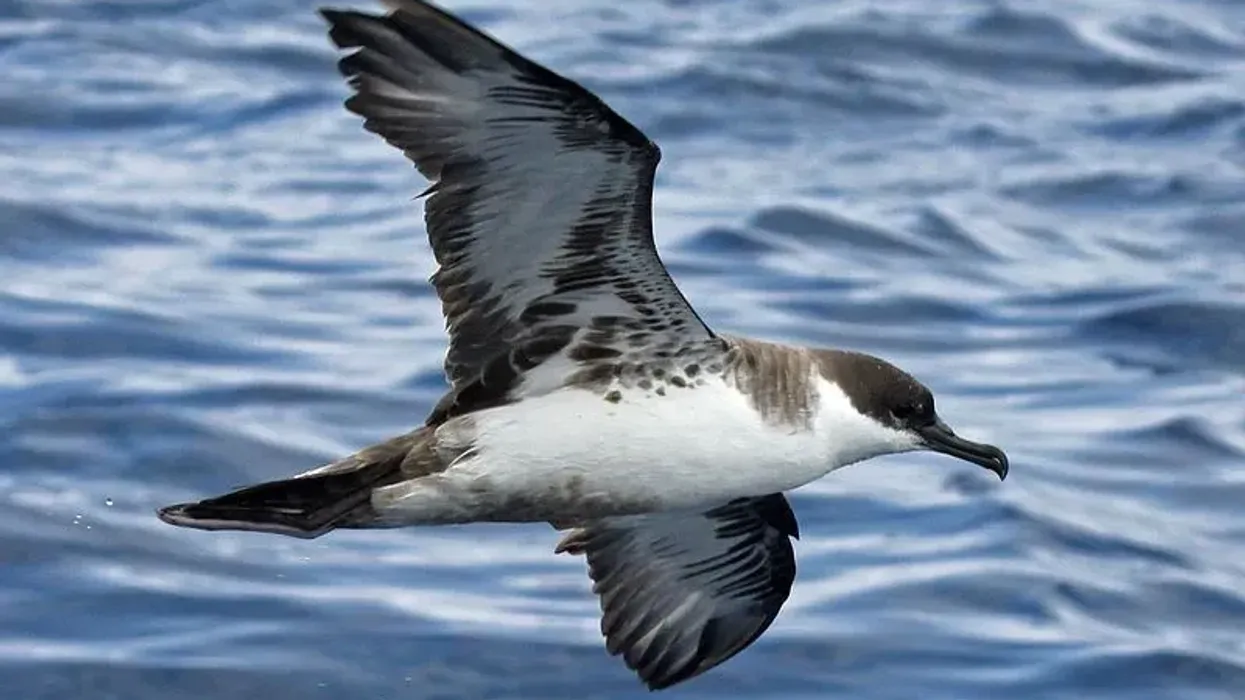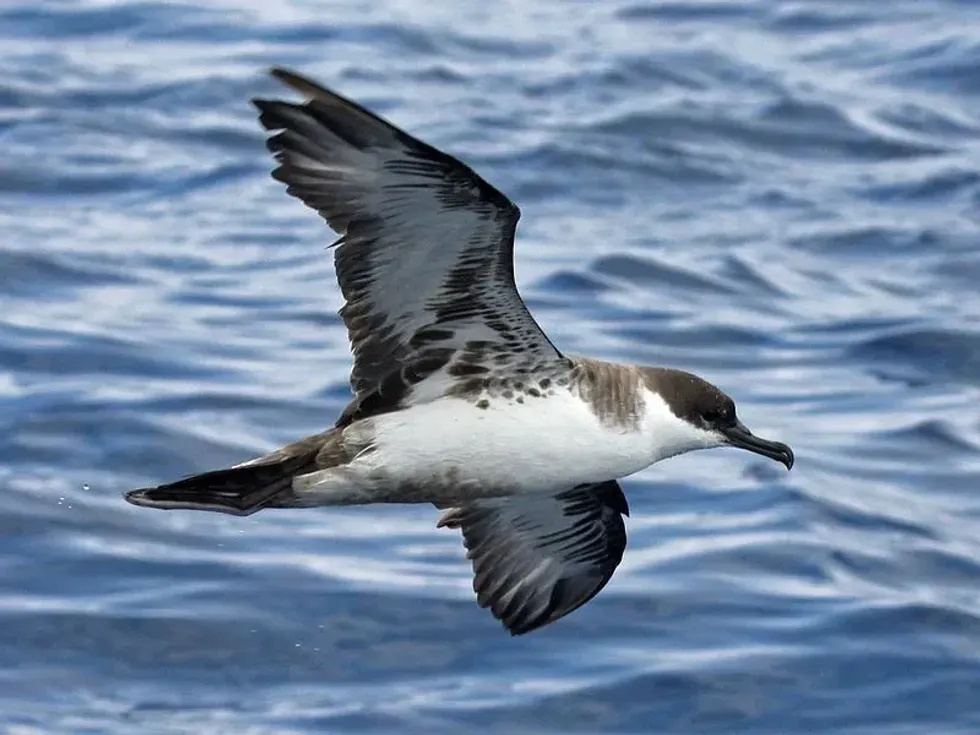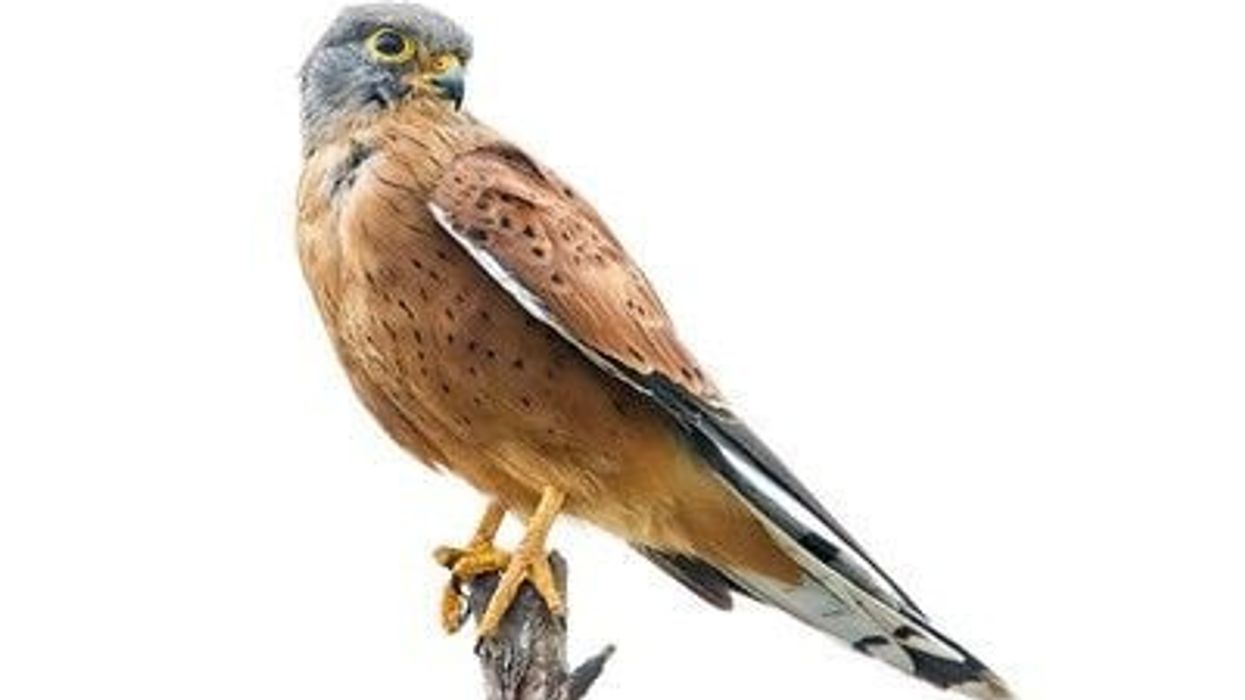The great shearwater is a species of marine bird belonging to the Procellariidae family. This seabird is mostly found flying above the Atlantic Ocean and its adjacent coast.
A great shearwater spends its winter in the North Atlantic and migrates to the oceanic islands of the South Atlantic during the breeding season. Their preferred breeding grounds in the south include the Tristan da Cunha group of islands, Falkland Islands, and Gough Island.
It is quite similar to the sooty shearwater, another species of the same family, in terms of their flight patterns and route of migration. They make long gliding motions accompanied by stiff wingbeats.
The breeding season of this large shearwater extends from October to December. They build their nests in burrows, adjacent to one another, along the sloping grounds of oceanic islands. After mating, the female bird lays a single egg and both parents incubate it.
The chicks become self-reliant almost after 105 days from birth. These birds feed on fishes, squids, crustaceans, and offal from fishing boats. They can dive almost 50 ft (15 m) below the surface of the water.
If you liked reading this article, then do check out the laughing gull and albatross!
Great Shearwater Interesting Facts
What type of animal is a great shearwater?
The great shearwater (Ardenna gravis) is a migratory species of bird belonging to the Procellariidae family. This bird migrates during the winter season from the Southern Hemisphere to the Northern Hemisphere.
What class of animal does a great shearwater belong to?
These shearwaters belong to the class Aves.
How many great shearwaters are there in the world?
There are around 15,000,000 individuals present in the world.
Where does a great shearwater live?
These birds, like the black skimmer, are mostly found flying above the Atlantic Ocean and the adjacent coastal areas. Their breeding grounds include the oceanic islands of the South Atlantic namely the Falkland Islands, Gough Island, and the Tristan da Cunha group of islands.
These birds also inhabit the southwestern part of the Indian Ocean. Towards the end of the breeding season, they migrate from their nesting ground in the South to the Northern Hemisphere.
In winter, they are mostly found in the North Atlantic and along the Atlantic coast of North America.
Their range extends from Greenland and Newfoundland in the north to the Gulf of Mexico in the west. They also reside in Ontario in Canada and Tennessee, in the southeastern part of the United States.
What is a great shearwater's habitat?
These birds reside in pelagic waters and offshore waters. Pelagic water, meaning open sea, refers to the water column in the ocean. It stretches from the surface of the ocean to the bottom. Their preferred breeding habitat on oceanic islands includes grasslands and woodlands.
In grassland habitats, the predominant vegetation includes grasses along with herbs and legumes. The woodland habitat is characterized by trees forming a continuous canopy. They prefer to reside in places with cold climatic conditions throughout the year.
Who do great shearwaters live with?
These birds are known to stay in groups, commonly referred to as flocks or improbability. They forage, migrate, and fly together in flocks.
How long does a great shearwater live?
This bird lives up to seven years on average.
How do they reproduce?
Their breeding season extends from October to December. These birds are known to form monogamous pairs during this time. These birds defend their territories and exhibit courtship displays during the breeding season.
They build their nests on grasses or ferns, along sloping grounds. They are known as colonial nesters as they build their nests in close proximity inside large colonies. After mating, the female bird lays a single egg inside the nest.
The eggs are incubated by the pair for about 53-57 days. Both parent birds are involved in taking care of the young. Great shearwater chicks become self-reliant after 105 days from birth.
What is their conservation status?
The International Union for Conservation of Nature or IUCN Red List has listed the great shearwater (Ardenna gravis) as a species of Least Concern. However, the destruction of habitat and climate change are a few of the major threats encountered by this species.
Great Shearwater Fun Facts
What do great shearwaters look like?
Both the male and female species of great shearwaters are identical in their appearance. They have a dark gray-brown plumage on their upper parts. Their flight feathers and elongated bill are black.
The underside of their wings has dark markings. They also have a distinct dark patch on their white underbelly. Their plumage contains white bands running across them from the hind side of the neck up to the tail feathers.
They have a white rump present above the tail. They have a distinct brown collar extending from the mantle, below the neck to the upper side of the chest.
They have pink legs and a dark cap on their heads. A great shearwater juvenile has a grayer plumage compared to adults. They are often compared to the sooty shearwater.

How cute are they?
Their cuteness usually stems from their appearance. The presence of a contrasting dark cap, markings on the underside of the wings, dark patch on the belly, white bands across the dark gray-brown plumage, white rump, and pink legs make them cute.
How do they communicate?
This bird communicates through a range of vocalizations. It usually starts calling from mid-afternoon and continues to dusk.
The calls of this bird lack a melodious tone and are perceived as a harsh noise. Its nasal and raucous calls can be heard when it is on the ground, but this bird does not call during flights. The calls of male and female birds of this species usually differ from one another.
How big is a great shearwater?
The average great shearwater size or body length is around 16.9-20 in (43-51 cm). They are larger in size than the blue jay which is 8.6-11.8 in (22-30 cm)in length.
How fast can a great shearwater fly?
The exact speed of great shearwaters during flight is not known. Like the sooty shearwater, these birds fly by making gliding motions accompanied by stiff wingbeats. They often soar along the air currents.
How much does a great shearwater weigh?
Great shearwaters weigh around the range of 1.5-2 lb (715-950 g).
What are the male and female names of the species?
The male and female birds of this species are commonly referred to as cock and hen respectively.
What would you call a baby great shearwater?
Baby great shearwaters are known as chicks.
What do they eat?
These carnivorous birds mostly feed on fish and squid. Among fishes, they usually prefer Atlantic mackerel and capelin. Their diet also includes crustaceans and cephalopods.
They are also known to feed on offal from fishing boats. They usually forage during their flight above the oceanic surface. Great shearwater foraging behavior also includes diving deep into the ocean to catch their prey.
Are they dangerous?
These birds are not considered to be dangerous. However, during the breeding season, they do become territorial and aggressive to protect their nesting ground from intruders.
Would they make a good pet?
There have been no reports of keeping these seabirds as pets.
Did you know...
The name 'shearwater' is derived from their pattern of flying right above the oceanic surface, contouring the silhouette of the waves. These birds appear to shear the water surface using the tips of their outstretched wings.
Where do great shearwaters sleep?
Great shearwaters do take rest and sleep. They are known to sleep on the ground, in their nesting colonies, or on the water.
How deep can great shearwaters dive?
These birds can dive almost 50 ft (15 m) below the surface of the water to catch their prey.
Here at Kidadl, we have carefully created lots of interesting family-friendly animal facts for everyone to discover! Learn more about some other birds from our great Auk facts and spotted sandpiper facts pages.
You can even occupy yourself at home by coloring in one of our free printable Great shearwater coloring pages.










